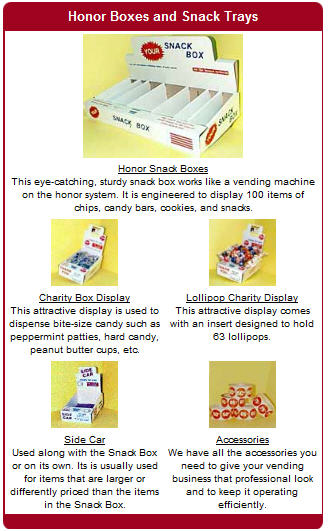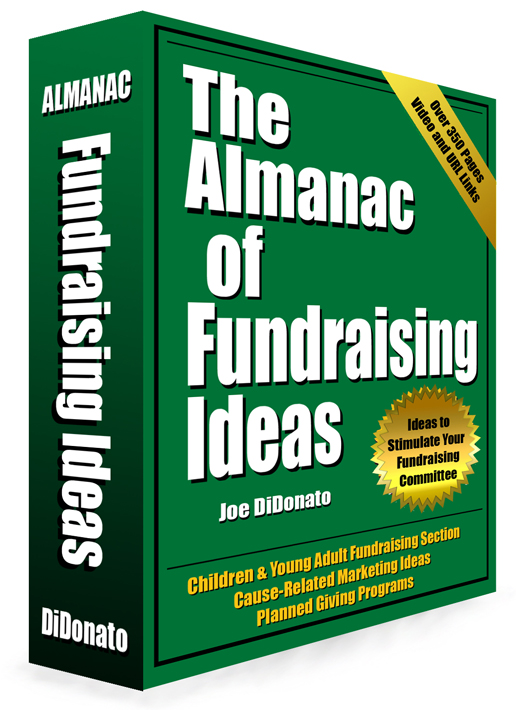|
Potential
Revenues:
|
$$$$
|
|
Revenue Source:
|
Loose change and bills left in the honor boxes
|
|
Advertising:
|
None
|
|
Equipment/Supplies:
|
Honor Boxes
|
|
Partners:
|
Local businesses, www.SheridanSystems.com, www.CoolPlastic.com |
|
Volunteers
Needed:
|
People to place, refill, and collect the money |
How It Works:
This is the charity version of a vending
machine route. Honor boxes come in both
corrugated box configurations, as well as plastic towers. Both are filled with candy or snacks, along
with a suggested donation amount for each item – usually $1. The corrugated box variety offered by www.SheridanSystems.com and others,
can be placed in company or small office kitchens and break rooms. When employees take their breaks, they can
choose one of the snacks from your assortment and put the minimum donation
amount in the box.
The term “honor box” comes from the fact
that you are leaving both the snacks, as well as the donations in an unsecured
environment. Anyone can take the candy
or the money. You’ll have to monitor each
location to determine if you want to continue delivering to them, but in
general, most people are pretty honest and generous. In a study,[i] typical
results showed that payments averaged about 90-95% of the suggested
amount. Whether that average would
increase when the honor box is done as a charity fundraiser has not been statistically
determined.
Another version of the honor box is a clear
acrylic candy dispenser that has a donation box fitted on top. This is usually designed for the bags of
small candy samples or mints that you see in most stores. These are sometimes placed in the same areas
recommended in the write-up in the Donation
Boxes section of this book. These
are more costly than the corrugated cardboard honor boxes. You can see samples of
this type of honor box at www.CoolPlastic.com.
Consider how perishable each product might be. If you’re going to do donuts and bagels,
those items have to be replaced daily, so you might only want to deliver them
on Friday’s. Candy tends to last much longer. Check the expiration dates on each product,
if available.
Ideas to Consider:
Best locations are usually in the company
break areas and small office kitchens. Other
areas might be union halls and association meeting places, as well as libraries
on a profit-split basis. Some of the larger
corporations already have vending machines, and they may not be willing to put
a competing box nearby. A compromise
location or selection of items that are unique from the ones sold by the
for-profit vending routes may be worked out to everyone’s satisfaction.
Best places to obtain low-cost candy bars
and snacks are going to be Wal-Mart, Costco and Sam’s Club. However, if you watch sales at local
drugstore chains, especially after Halloween, you’ll see some extraordinary
buys. You might also be able to get some
of the candy donated, especially if this is a short-term project.
If you live near a manufacturer of these
snack items, see if you can work out a direct purchase deal. At the very least, you can ask for some
donated products.
As with the
donation boxes, you can set up a monthly revenue stream along with people who
can manage the routes for you. Ideally,
you’ll have many friends and supporters who work in some of these target
companies. Perhaps you can persuade them
to manage the boxes and money on your behalf.
Source of Idea: The first honor box study (see footnote
referenced in this write-up) spanned a 12-year period from 1993 to 2004. “Freakonomics” attributed the honor box to a
research analyst named Paul F. who grew a large bagel business to 140 companies
after a work cut-back, and still operates it today. He’s delivered more than 1.3 million bagels.
Back to Home Page
|

